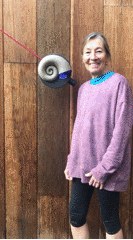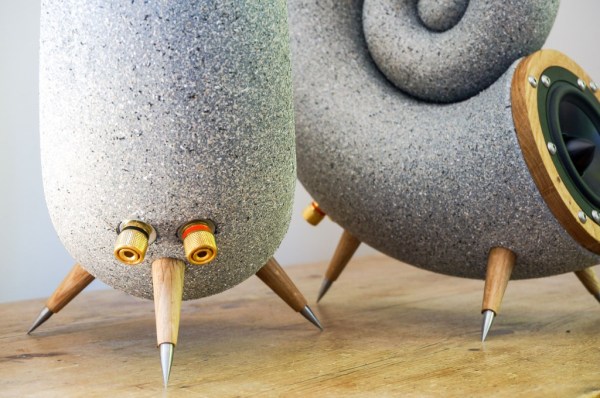Most of us are aware that trees turn CO₂ into oxygen, but we’d venture to guess that many people’s knowledge of this gas ends there. Is it feast or famine out there for the trees? Who can say? We admire [rabbitcreek]’s commitment to citizen science because he’s so focused on making it easy for people to understand their  environment. His latest offering, a giant analog CO₂ meter, might be our favorite so far.
environment. His latest offering, a giant analog CO₂ meter, might be our favorite so far.
The brains of the operation is an Adafruit Feather Adalogger. It reads the CO₂ sensor that’s mounted close to the business end of the nautilus, and becomes the quill that writes the CO₂ value to a FeatherWing e-ink screen. For the giant needle, this lovely meter uses one of those fiberglass poles you mark your driveway with so you can find it under a blanket of snow. The needle is counter-balanced with washers encased in printed plastic.
As you can see in the GIF, there’s a decent delay between the CO₂ blast and the needle response — we like to imagine the CO₂ spiraling slowly through the nautilus like a heavy, ill wind on its way to gravely move the needle.
Want a way to monitor air quality that’s a bit more discreet? Slip this portable meter into your pocket.













